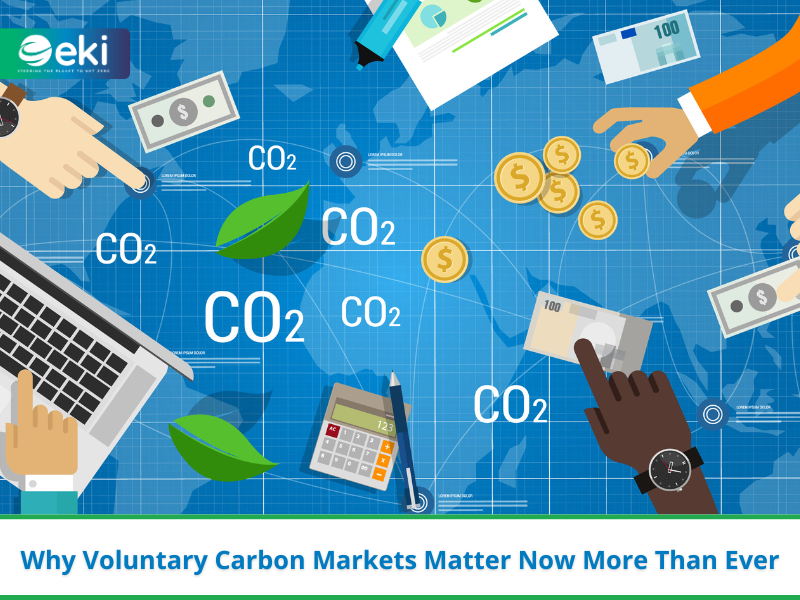On May 10, the European Commission co-legislators officially endorsed the Carbon Border Adjustment Mechanism (CBAM), heralded as a pivotal instrument to assign a “fair price” to the carbon footprint associated with carbon-intensive goods production entering the EU. The primary objective is to prevent carbon leakages; shifting of EU productions in a geography with less stringent carbon regulations. The regulation’s reporting system is slated for implementation starting October 1 for specific goods, allowing for a gradual rollout.
Importers are expected to commence financial levy payments from the year 2026. This move signifies a significant step in the EU’s commitment to environmental sustainability and its broader strategy to align global trade with climate objectives.
However, the CBAM, especially in the developing countries has not been short on controversies and rightly so. It places all nations on an equal footing both technologically and financially, which creates an unfair obstacle for the Global South, undermining historical footprint responsibility and common but differentiated principle of UNFCCC.
What is CBAM?
The Carbon Border Adjustment Mechanism (CBAM), initiated by the EU, stands as the world’s pioneering carbon border tax, designed to mitigate carbon emissions and counteract ‘carbon leakage.’ This phenomenon occurs when companies relocate production to nations with laxer emissions standards, potentially leading to an overall rise in emissions.
The phased implementation, commencing on October 1, 2023, targets high-emission sectors like cement, fertilizers, iron and steel, aluminum, hydrogen, and electricity. Over three years, CBAM will expand to encompass more sectors, culminating in full implementation by January 1, 2026.
At this point, the carbon price will be imposed to align imports’ carbon cost with domestic goods, fostering a leveled industrial playing field and incentivizing decarbonization. The mechanism addresses ‘carbon leakage’ by discouraging the outsourcing of carbon-intensive production and encourages green practices globally. The ultimate aim is to achieve climate goals outlined in the European Green Deal, striving for a 55% reduction in carbon emissions by 2030 and carbon neutrality by 2050.
Importers will need to acquire carbon certificates reflecting the import’s carbon price, ensuring transparency and equitable competition while steering non-EU producers toward eco-friendly practices.
Objections
The Carbon Border Adjustment Mechanism (CBAM), while with a noble aim of curbing carbon leakage, overlooks the economic and technological gaps between the global North and South. It places all nations on an equal footing, contradicting the principle of common but differentiated responsibilities enshrined in the UNFCCC. Applying a carbon tax identical to the EU’s Emissions Trading System disregards variations in purchasing power parity (PPP) among countries. This approach borders on environmental colonialism and challenges the foundational principles of trade laws, causing more harm than good for industries in India and other developing nations.
“Your steel, which has to be green, and my steel, which also has to be green, are both in transition mode. We both invest in greener assets. So, if you’re punishing us doubly in the meantime, how fair is it? Our disapproval of CBAM has been clearly conveyed to them,” Indian Finance Minister Nirmala Sitharaman had remarked earlier. She also went ahead and called CBAM, “not moral at all”
The imposition of a uniform reporting system poses a threat to the sovereign nature of environmental reporting. Enforcing such a system on operators in countries like India appears overly prescriptive. Adding to the irony, the EU, responsible for 22% of cumulative CO2 emissions since 1750, demands uniform compliance, while India, contributing a mere 3% to total cumulative emissions in the industrial era, faces undue pressure. A more equitable approach would involve recognizing differing national circumstances, prompting the EU to consider implementing CBAM certificates with variable price slabs based on the unique challenges of each developing nation.
This could also potentially hit the international trade relations among the developing countries and EU. For example, considering the EU’s position as India’s third-largest trade partner and India’s anticipated growth, exports, especially in CBAM-covered sectors, are expected to increase significantly. As CBAM extends its coverage to additional sectors, the impact on India becomes more pronounced. Due to the higher carbon intensity of Indian products compared to their European counterparts, the resulting carbon tariffs would be proportionately elevated, posing a substantial challenge to the competitiveness of Indian exports in the EU market.
This scenario underscores the need for strategic considerations and potentially necessitates adjustments in India’s export strategy to align with the evolving dynamics of CBAM and its expanding reach across various industrial sectors.
Impact on Carbon Markets
The exact contours of the final CBAM version remain uncertain, introducing a level of unpredictability for international markets and businesses engaged in cross-border trade with the EU. On a global scale, the implementation of CBAM is poised to necessitate an extensive increase in emissions reporting and related administrative processes.
CBAM certificates are anticipated to mandate verified product carbon footprints, establishing a scenario where companies providing certified low-carbon products could enjoy a robust competitive edge when catering to the EU market. The implications of CBAM extend beyond its immediate tax structure, shaping a landscape where emission transparency and eco-friendly product offerings become pivotal factors for international trade dynamics within the EU.
What can you do?
In preparation for the full implementation of CBAM, fostering collaboration with suppliers is crucial; working closely to obtain necessary data, such as upstream emissions and carbon footprints for each product or material. Assessing financial risks linked to CBAM and weighing the pros and cons of production locations are also essential.
Importers should also carefully consider supplier options, evaluating the advantages and disadvantages of choosing low-emission suppliers outside the EU or potentially relocating manufacturing within.
To anticipate and manage the impacts of CBAM, companies can conduct scenario analyses to identify emissions related to applicable imported goods. Engaging with suppliers and manufacturers to gather emissions data, involving climate risk and opportunity colleagues to calculate tonnage and carbon prices, and ensuring compliance with relevant regulatory bodies are key components of a comprehensive strategy.
Additionally, companies should assess whether goods are already carbon-priced in the country of production to avoid double pricing. Establishing robust processes for collecting emissions data, implementing systems for reporting, and processing payments according to CBAM regulations are vital steps, especially for large organizations with multiple entities or teams.










